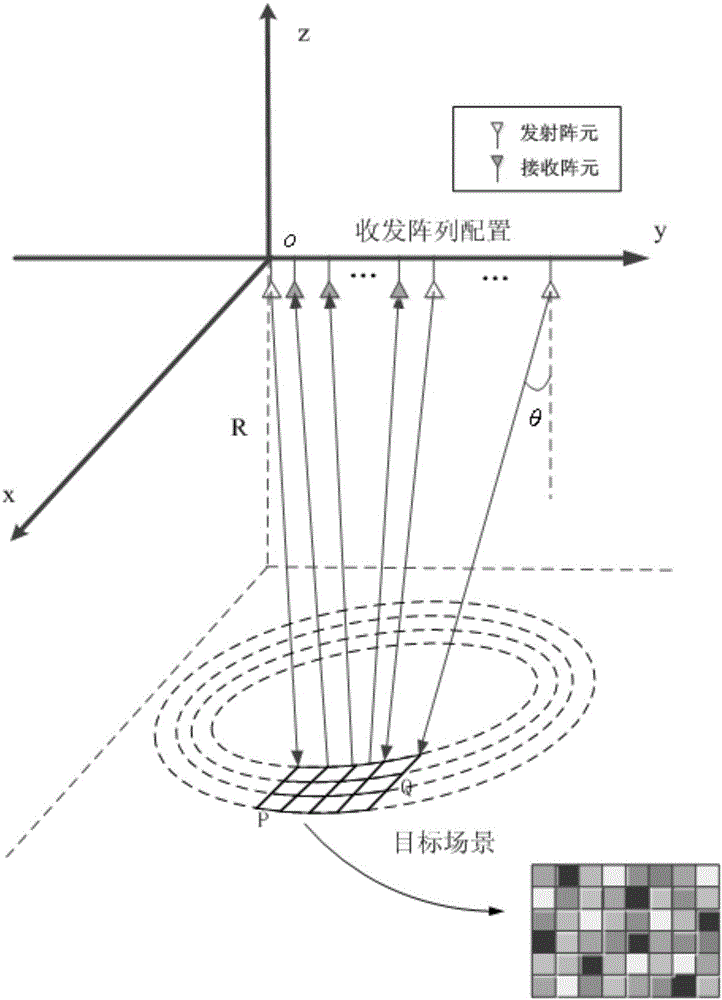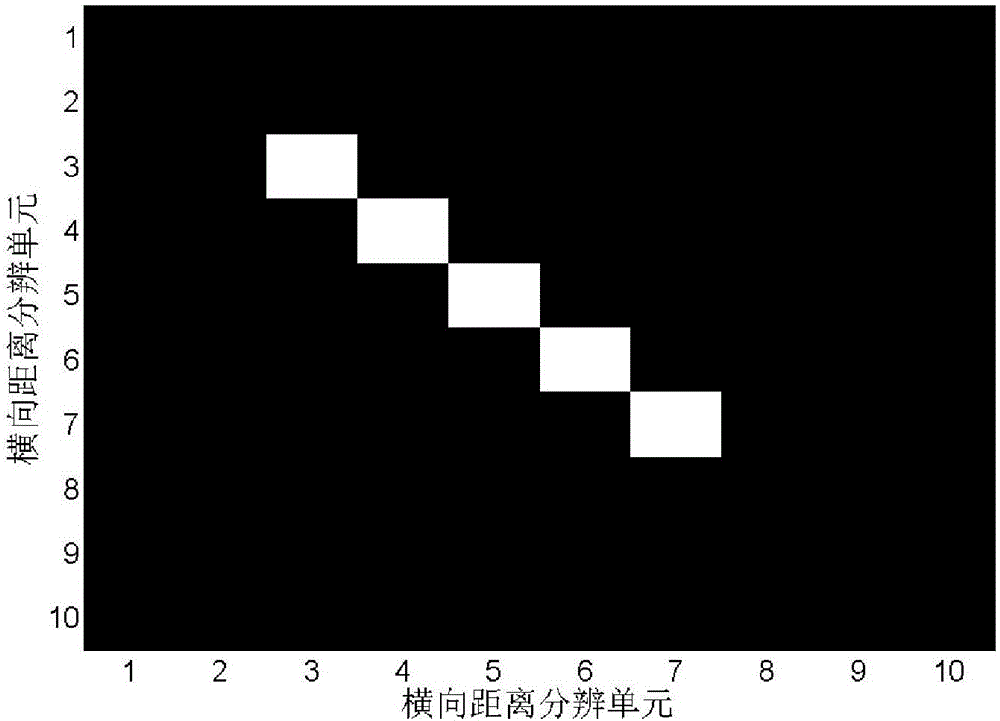Multiple-input multiple-output array radar staring imaging method based on tensor compression perception
A multi-transmit, multi-receive, compressive sensing technology, applied in the radar field, can solve the problems of large dimension of the sensing matrix, increase the storage burden of the computer and the complexity of the compressive sensing reconstruction algorithm, and achieve the effect of reducing the complexity of the algorithm
- Summary
- Abstract
- Description
- Claims
- Application Information
AI Technical Summary
Problems solved by technology
Method used
Image
Examples
Embodiment Construction
[0037] The following will clearly and completely describe the technical solutions in the embodiments of the present invention with reference to the accompanying drawings in the embodiments of the present invention. Obviously, the described embodiments are only some, not all, embodiments of the present invention. Based on the embodiments of the present invention, all other embodiments obtained by persons of ordinary skill in the art without making creative efforts belong to the protection scope of the present invention.
[0038] An embodiment of the present invention provides a tensor compressed sensing-based multi-input multi-receiver array radar staring imaging method, such as figure 1 As shown, the method includes the following steps:
[0039] Step 1, configure the receiving array and transmitting array of the multi-transmission and multi-receiving radar, the receiving array: the number of receiving array elements N r , the spacing d between receiving array elements r , an...
PUM
 Login to View More
Login to View More Abstract
Description
Claims
Application Information
 Login to View More
Login to View More - R&D
- Intellectual Property
- Life Sciences
- Materials
- Tech Scout
- Unparalleled Data Quality
- Higher Quality Content
- 60% Fewer Hallucinations
Browse by: Latest US Patents, China's latest patents, Technical Efficacy Thesaurus, Application Domain, Technology Topic, Popular Technical Reports.
© 2025 PatSnap. All rights reserved.Legal|Privacy policy|Modern Slavery Act Transparency Statement|Sitemap|About US| Contact US: help@patsnap.com



